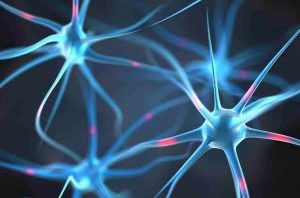Stem Cells
What are Stem Cells?
Stem cell therapy may also be referred to as regenerative medicine. Stem cells are cells with the potential to develop into many different types of cells in the human body. Under ideal conditions within the body or a laboratory, stem cells will divide to form more cells. These cells are called daughter cells.
Daughter cells will either become new stem cells or specialized cells. Specialized cells can be blood cells, brain cells, cardiac cells, or bone cells. Stem cells are the only type of cells with this natural ability to generate new cell types.
Stem cells differ from other cells in three key ways:
- They are un-specialized meaning they cannot do specific functions in the body
- They have to ability to divide and renew themselves over a period of time
- They have the potential to become specialized cells
Lucky for residents of North Texas, AOA Orthopedic Specialists has multiple providers specializing in stem cell therapy.
Stem Cells in Orthopedics
Various sources of stem cells have been studied for orthopedics. There are two main categories from where stem cells can be derived; Embryonic Stem Cells, and Adult Stem Cells.
Embryonic stem cells come from embryos that are between 3 and 5 days old. At this stage of development, an embryo is called a blastocyst and is composed of roughly 150 cells. A blastocyst is a pluripotent stem cell. Pluripotent means that the cells can divide into more stem cells or become any type of cell in the body.
Adult stem cells are found in most adult tissues, primarily bone marrow and adipose (fat) tissue. In comparison to embryonic stem cells, adult stem cells are more limited in their ability to turn into various types of cells.
Stem cells can be used to treat a variety of orthopedic conditions including:
- Bone-Joint Injuries
- Osteoarthritis-Cartilage Defects
- Ligament-Tendon Injuries
- Femoral Head Osteonecrosis
- Osteogenesis Imperfecta
After undergoing stem cell treatment at AOA Orthopedic Specialists, patients will typically start to feel the results between 3-4 weeks of the initial procedure.
Am I a Candidate for Stem Cell Therapy?
If you would prefer to postpone or avoid the need for surgery and a long post surgical recovery, it may be worth considering stem cell therapy.You may be a candidate for this innovative procedure if you have been diagnosed with tendinitis, mild-to-moderate degenerative joint disease, cartilage or ligament tissue tears, or any type of musculoskeletal injury that has not responded to conservative treatments.
schedule an appointment with one of our providers for this innovative procedure!
F.A.Q.
How does stem cell therapy work?
Stem cells are injected into the target location of the body where they can move to damaged or injured tissues in stem cell therapy. They may then develop into the precise cell types required for repair, or they may release growth factors and cytokines to encourage the body’s natural healing processes.
What conditions or injuries can be treated with stem cell therapy?
Stem cell therapy has demonstrated promise in treating a variety of ailments, including orthopaedic injuries (such as cartilage or tendon injury), neurological disorders (such as Parkinson’s or Alzheimer’s disease), cardiovascular diseases, autoimmune diseases, and certain types of cancer.
Is stem cell therapy safe?
Stem cell therapy has been extensively studied and applied in a variety of medical sectors. The operation is generally regarded safe when conducted by qualified healthcare practitioners in proper clinical conditions. However, like with any medical procedure, there are dangers and side effects that vary based on the type of stem cells employed and the individual’s specific circumstances.


